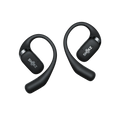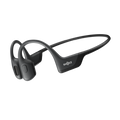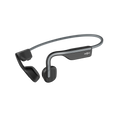Looking to do some camping this spring? While many of the national parks are still too cold for most of us, things are starting to heat up in the Southern United States allowing for some amazing opportunities to get into the wilderness. In fact, March and April are the most popular months for campers in several parks.
But with people itching to get out and about, pitches at designated campsites might be few and far between. So we’ve identified four national parks that are best for visiting in the springtime and that also allow backcountry camping for those who prefer to get off the grid and get into nature. Check out the best national parks to camp at this spring and get ready for a road trip! Don’t forget to pack a pair of AfterShokz to set the right travel vibe.
Joshua Tree National Park
Joshua Tree National Park (CA) is one of the most visited national parks in the country, attracting nearly 3 million visitors a year. March is the most popular month for campers due to the near-perfect temperatures during that time of year with an average high of 72°F high and an average of low 48°F.
There are 500 campsites in the park and these get booked up quickly, so making a reservation quickly is recommended to ensure you can snag a spot on site.
However, you shouldn’t feel limited to camping at a campsite, as the park also allows backcountry camping. Camping in the backcountry does come with its own unique challenges because the natural water sources are not reliable. This means campers have to bring their own water.
But if you feel up to the rugged backcountry challenge, you’ll definitely enjoy an off-the-grid experience. Beyond the traditional campsites, typically only a few hundred backcountry campers share the 800,000 acres of natural wilderness. For example, we calculated that even at its busiest, there’s over an average of 1,250 acres for each backpacker. That’s quite a lot of space to connect with nature while tuning into your favorite playlist!
Capitol Reef National Park
Capitol Reef National Park (UT) attracts around 800 backpackers each month from March to May. Although tent campers don’t really swing into action until the summer, the backpackers seem to know something that the tent campers don’t, which makes it a popular outdoor destination. Perhaps it’s the temperatures or perhaps it’s the quality of the night sky.
You see, the Capitol Reef NP is a designated International Dark Sky Park, which means you’d be hard-pressed to find a better place for star-gazing. It’s a remote national park with just one developed campground (71 sites) and two primitive campgrounds (11 sites combined). Backcountry camping is also allowed and again, even at its busiest, you will not be wanting for space. In fact, it’s even less crowded than Joshua Tree NP. And if you want some company, listen to your favorite podcast on your AfterShokz.
Big Bend National Park
Big Bend National Park (TX) is probably the most popular camping destination on this list, despite being one of the most remote and least-visited of all the national parks in the lower 48 states. It attracts fewer than 500,000 visitors a year.
In fact, if you were hoping to snag a campsite this spring, you’d be out of luck because they’re already full for March and April. Don’t let that put you off, though, because interested campers still have the green light to hike into the wilderness and set up camp where you want (subject to park rules, of course).
Despite the popularity, you should never be competing for space in the 800,000-acre park. You’ll likely only be sharing with a few thousand other campers and there are 150 miles of maintained trails to hike on. Combine that with dark night skies and some incredible bird-watching opportunities, it should be well worth your while to pay a visit.
Congaree National Park
Saving the best for last, Congaree National Park (SC) is a gem that should probably be kept secret so only those in the know can enjoy it! This is a tiny, 25,000-acre national park and, unlike the other parks on this list, its climate is humid rather than arid or desert. There are only two walk-up campgrounds but backpacking is allowed. And hardly anyone seems to do either if the park statistics are to be believed (which they are).
There are 25 miles of trails in the beautifully-forested park, as well as opportunities to canoe, kayak, fish with your AfterShokz headphones by your side (or over your ears).
Honestly, if you want to get away camping this spring to a national park but don’t fancy visiting a desert, you’d be hard-pressed to find a sweeter spot. Or you could hang on until the end of May and try to catch the firefly mating season, which is way more beautiful and way less gross than it sounds!
About The Author
Bertie Cowen is the editor of EffortlessOutdoors.com, a blog that aims to help more people get outdoors more easily. You can also find him on Twitter.








